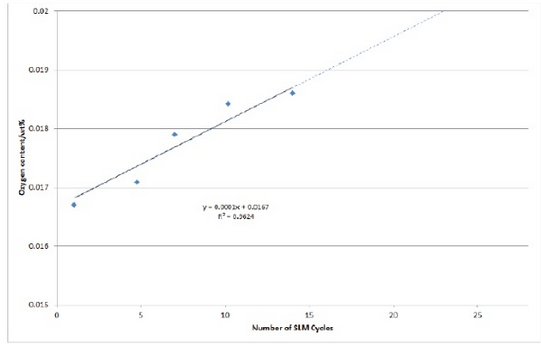As a new manufacturing technology, 3D printing is developing rapidly in the industrial field. 3D printing often takes place in sealed rooms because many of the byproducts of the process can be harmful or toxic. In addition, any reaction between metals and the atmosphere, especially oxygen and nitrogen, must be minimized as much as possible. This is achieved by filling the chamber with an inert gas “blanket” or, preferably, by creating a vacuum. However, neither technique completely eliminates the interaction with oxygen, and some metal powders can fuse with the atmosphere, leading to impurities.
As the 3D printer uses the same powder bed again, subsequent printing operations will gradually increase the amount of impurities, which can cause all sorts of problems. For example; For metal 3D printing, since elements exist in the form of gas after metal remelting in the printing process, air holes and other defects may be generated locally, affecting the compactness and mechanical properties of the workpiece. Therefore, for different systems of metal powder, oxygen content is an important index, the industry’s general requirements for this index is below 1500ppm, that is, the oxygen element in the metal mass percentage between 0.13 to 0.15%, aerospace and other special applications, customers have more stringent requirements for this index.

Oxygen concentration and Oxygen sensor
The data show that when the oxygen concentration in the metal powder exceeds 200ppm, the final product will change significantly. Tensile strength and ductility show the influence of impurities in the atmosphere. Hydrogen or nitrogen can also cause additional impurities that are not conducive to building the best quality 3D-printed metal objects even at very small concentrations. Studies have shown that oxygen has a significant damaging effect on material properties, and the metal powder used in 3D printers should be replaced as regularly as possible.

JXCT’s suggestion for 3D printing oxygen analysis is to control the cost of nitrogen charging and monitor the dynamic fluctuation of oxygen content. JXCT oxygen sensor (O2 sensor) can also accurately measure O2 concentration, with long service life, high precision, small size, simplicity, low cost, fast response speed, high measurement accuracy, good stability and repeatability, free maintenance and low power consumption. Oxygen Gas Sensor is suitable for the concentration and leakage of oxygen gas in various environments and special environments. It is suitable for battery power supply and can be used together with JXCT cloud. Improve detection effect.